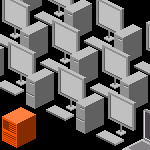 |
Thin Clients
- Note the continued development and increased performance of “thin client” computers. Thin client are stripped down computers that act much like smart terminals did in the days of mainframe computing. Thin clients rely on remotely located network equipment to provide them with storage and software.
- Studies have found that the use of “thin clients” (a.k.a. “network pc’s”) have reduced IT maintenance costs by 50% over the lifespan of the pc. Fewer working parts make for more reliable hardware. Centralizing applications on a server reduces software deployment and maintenance time. It also makes it easer to maintain standard hardware and software configurations. Thin clients increase network traffic. In extreme cases, the volume of traffic can degrade a network’s performance.
- The use of “thin clients” will make it easier for an organization to benefit from economies of scale. It’s easier and less costly for instance to add one storage device to a network than it is to add more storage to every pc on that network.
|
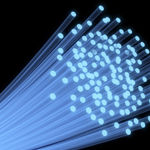 |
Fiber Optic Cabling
- Note the increased use of fiber optic cabling. Existing twisted pair copper cable systems will be gradually phased out and replaced by fiber optic cable systems in ever increasing numbers. Newly installed network infrastructures will combine fiber optic and wireless technology. In the year 2000, data throughput (bandwidth) on a single strand of fiber optic cable reached 141 billion bits per second. By 2010, throughput will reach 563 billion bits per second. During the same time period, the capacity of multi-fiber mainline trunks will increase from 600 trillion bits per second to 1,000 trillion bits per second. High performance optical switches and routers will be become commonplace by the year 2010. After 2010, the pace of improvements to optical networks will slow.
- The carrying capacity of fiber optic cable will continue to double every 12 months (1 year).
- Within five years, optical switches will be capable of separating data streams into wavelengths of light. This will greatly increase the carrying capacity of existing optical cables. Copper cabling throughput will also increase but its rate of improvement will be significantly less then that of fiber optical cables. As a consequence, the use of packet switching will decline. Lambda switches and Dense Wavelength Division Multiplexing (DWDM) will become the primary method of sending data over the internet.
- As the carrying capacity of fiber optic cable improves, the price of delivering a bit of data will decline. The amount of fiber optic cable put in place throughout the world in the next five years will increase dramatically. Increased throughput coupled with more cable runs will have the effect of reducing long distance charges. Reduced costs will increase communications between geographically separated computers.
Reference(s):
Based on an article in PC Week by Pankaj Chowdhry entitled Networks of Tomorrow (dated January 3, 2000)
|
 |
Jini Networks
- Sun Microsystems Inc. is developing a new networking environment called Jini that allows any specially configured electronic device to easily connect to a computer network. This has potentially wide-reaching implications. When fully developed, Jini will let any computing device (including cellular phones, pagers, laptops and even home appliances) connect to any computer network very easily. Jini uses Sun’s Java programming language. In theory, programs written in Java can be written once and run on many different types of computers. Jini technology relies on a small amount of Java code to create a ”federation” of Java virtual machines systems which emulate the Java programming environment on the network. People, devices, data, and applications connected to the network are dynamically connected to share information and perform tasks. Prototype peer to peer networks have already been tested. Full blown networks have yet to be demonstrated.
- Note the licensing of Jini technology by Sony and Philips for use in their consumer electronic products. This development paves the way for Jini technology to become the de-facto home computing network standard. Embedding Jini software into small electronic appliances is a major step in the development of home based networking. It also signals a willingness on the part of major consumer electronics manufacturers to shy away from proprietary Microsoft technology.
- Java based internet browsers may slowly evolve into mock operating systems that in effect, eliminate the need for proprietary operating systems like Microsoft Windows.
|
 |
Wireless LAN’s
- The marketplace is currently filled with several competing wireless LAN standards (i.e. 802.11a, 802.11b, 802.11g and 802.1x). No one standard has emerged as dominant. As is common with immature markets, hardware vendors have introduced proprietary schemes and are trying, as best they can, to make them de facto industry standards. As a result of the intense competition, hardware incompatibilities are commonplace. The market is likely to develop in one of two ways. First, a proprietary standard will capture enough of a market share to force competitors to retool their products and adapt the standard or leave the market. A second strategy is just as likely. Enlightened self interest may force competing vendors to adapt an industry standard that is aimed at insuring hardware compatibility amongst the competing brands. Vendors are betting that a market full of compatible hardware will likely grow the entire market and thus insure continued sales.
- Current wireless LAN schemes require one or more base radio stations to be strategically placed around an office so that data can be passed to and from network servers and mobile devices (i.e. PDA’s, laptop computers and other devices). By definition, wireless LAN technology eliminates the physical connection between a computer and a network. Workers using the new technology will thus be allowed to roam freely within an office and still maintain their network connection. This will foster a more computer friendly collaborative work environment.
- Wireless networks are likely to be used on construction sites. Ad-hoc networks are easy for contractors to set up. Contractor work sites will be better equipped than most architectural or engineering office networks. Because the job-site network is project specific, it can be written off as a cost of doing business. That means that each new project can be equipped with the latest technology available. No obsolete equipment.
- The cost of installing and maintaining a geographically fixed wireless network will continue to fall. Within 5 years, wireless infrastructures will become cost competitive with wire based networks.
- In the next 5 years, third generation (3G) cell phones will gain widespread acceptance. 3G phones support IP addressing. As a consequence, they can be easily tied to a network. We can expect this to capability to hasten the acceptance and increase the availability of wireless networking devices. IP networks will increasingly be called upon to carry voice communications. This in turn will hasten the merging of data and voice communications into one seamless network environment.
Reference(s):
Based on an article in PC Week by Pankaj Chowdhry entitled Networks of Tomorrow (dated January 3, 2000)
|
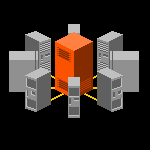 |
Enhanced Ethernet
- Note the increasing use of 10 Gigabit Ethernet. Gigabit Ethernet relies on optical (i.e. fiber optic) technology to insure throughput.
- Note the emergence of 40 and 160 Gigabit Ethernet specifications and test devices. These specifications are in the early stages of development. They are several years away from market and many more years away from wide scale use.
|
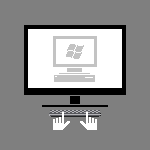 |
Remote Helpdesks
- The definition of what constitutes good customer service can be expected to expand over time. Demands for higher productivity and better service will force IT managers to exercise more control over a user’s desktop and automate many tasks that were previously done by hand.
- Demands for better service will also force IT managers to increasingly rely on server based software, enterprise wide standard hardware and software configurations and remote access to a user’s desktop.
- Bentley Systems has just introduced the “Drive My Desktop” initiative to all of its SELECT subscribers. Under this initiative, users can call Bentley Technical Support for help with a MicroStation problem. Bentley technicians would be allowed to take command of the user’s computer from a remote location and make all the necessary modifications to the user’s computer in order to solve the problem. Remote access a user’s machine could greatly enhance customer satisfaction. On the other hand, some users may be very reluctant to offer remote parties access to corporate desktops without additional safeguards being implemented. If Bentley’s initiative finds widespread acceptance, expect to see many other CAD developers adopt this method of technical support.
|
 |
Infra-Red Networking – Bridging the Last Mile
In the past 10-15 years, the US telecommunications industry has built a large number of interconnected high speed fiber optic networks throughout the country. During the same period of time, the Internet has become wildly popular. Both technologies (i.e. fiber optic networking and the Internet) have converged into a very sophisticated and complex infrastructure upon which much of the US economy depends.
Most businesses in the US have access to both high speed data services and the Internet. Unfortunately, the promise of these two converging technologies does not extend to most US households. Of late, the US telecommunications industry has been unable to provide most homes in the US with high speed data services. The reason for this is quite simple: lack of money. It costs a lot of money to lay new fiber optic wire to all the homes in the US.
Many competing schemes are employed to transit the “last mile” from the fiber optic superhighway into the home. For instance, cable television companies have tried to adapt their existing coaxial cable technology but their technical and marketing success has been limited. Telephone companies have improved the carrying capacity of their existing copper phone lines but that has also proved too costly for most consumers. Satellite transmission systems are also being used but it’s is too early to tell if this technology or the business model used to pay for it will become very popular. Wireless cell phone technology is also vying for attention but it is both too costly and too slow to become the preferred means of high speed data transfer and internet access.
In addition to these existing methods, a new technology is currently being tested that may provide both high speed data transmission and low cost. The technology is known as “free space optics”. It relies on infra red laser light to transmit data to a receiver in the open air at very high speeds. Because infra-red laser light dissipates rapidly, transmission range is limited to a few thousand meters. Transceivers (devices that contain both transmitters and receivers) have to be carefully placed within plain sight of one another. What emerges is a mesh of transceivers and sight lines in an area the size of a neighborhood (i.e. the last mile). The economic and technological viability of free space optics will be apparent within 5 years.
Reference(s):
Based on an article in Scientific American by Anthony Acampora entitled Last Mile by Laser (dated July, 2002).
|
 |
IP Based Networks
- Internet protocols will soon dominate networking. IP and advanced enhancements become the de facto standard for shipping data across networks. Note the explosion of IP addresses.
- Network protocols will evolve rapidly in the next five years. IP will become the dominant network protocol worldwide. Proposed improvements to the IP protocol (IP version 6) will allow data to be prioritized. However, IPv6 will be slow to catch on. Increased use of the Extensible Markup Language (XML) will speed the development of advanced web services to evolve and help tie the web together.
Reference(s):
Based on an article in PC Week by Pankaj Chowdhry entitled Networks of Tomorrow (dated January 3, 2000)
|
 |
Network Fabrics
In the near future, networks will be composites of many different sub-networks (i.e. a network of networks). Many different technologies (i.e. Ethernet and Bluetooth) will be used within the same network. Different topologies will be easily merged together (i.e. token rings and stars).
|
 |
New Office Locations
New modes of communication will spawn new work patterns. Note the unwiring of office space (see sections on wireless and mobile networking); the emergence of satellite work centers, mini-offices, telecommuting from home and the reliance on “hoteling” for mobile sales force and travelers.
|
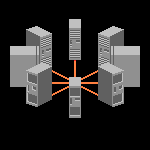 |
Advanced Copper Wire Networks
Advanced techniques will be developed in the next 5 years that will increase the carrying capacity (i.e. the bandwidth) of copper wire based phone systems and data networks.
Reference(s):
Based on an article in PC Week by Pankaj Chowdhry entitled Networks of Tomorrow (dated January 3, 2000)
|
 |
Coaxial Cable Networks
Coaxial cable technology will improve in the next 5 years as well. Advanced techniques will increase the carrying capacity of coaxial cable networks. In addition, the cable TV industry can be expected to adapt standards that will package data for delivery throughout the United States in a uniform way.
Reference(s):
Based on an article in PC Week by Pankaj Chowdhry entitled Networks of Tomorrow (dated January 3, 2000)
|
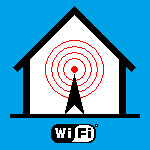 |
Home Networks
Services like voice, data and entertainment will be wrapped into one monthly bill. Increased competition among the many different delivery methods to the home. Each delivery method carries several different bundled services.
Reference(s):
Based on an article in PC Week by Pankaj Chowdhry entitled Networks of Tomorrow (dated January 3, 2000)
|
 |
Mixed Networks
Heterogeneous networks will continue to be the norm. In the next few years, we can expect to see a large number of unique computing devices come to market. Most will require network access. As more and more of these network appliances come to market, network protocols will be forced to change so all the new devices will be able to communicate with one another. Tools such as Sun Microsystems’ Jini and Lucent Technology’s Inferno will help ease communications problems. Microsoft’s Biztalk (.Net) and Hewlett-Packard’s e-speak will also help different types of computer devices talk with one another.
Reference(s):
Based on an article in PC Week by Pankaj Chowdhry entitled Networks of Tomorrow (dated January 3, 2000)
|